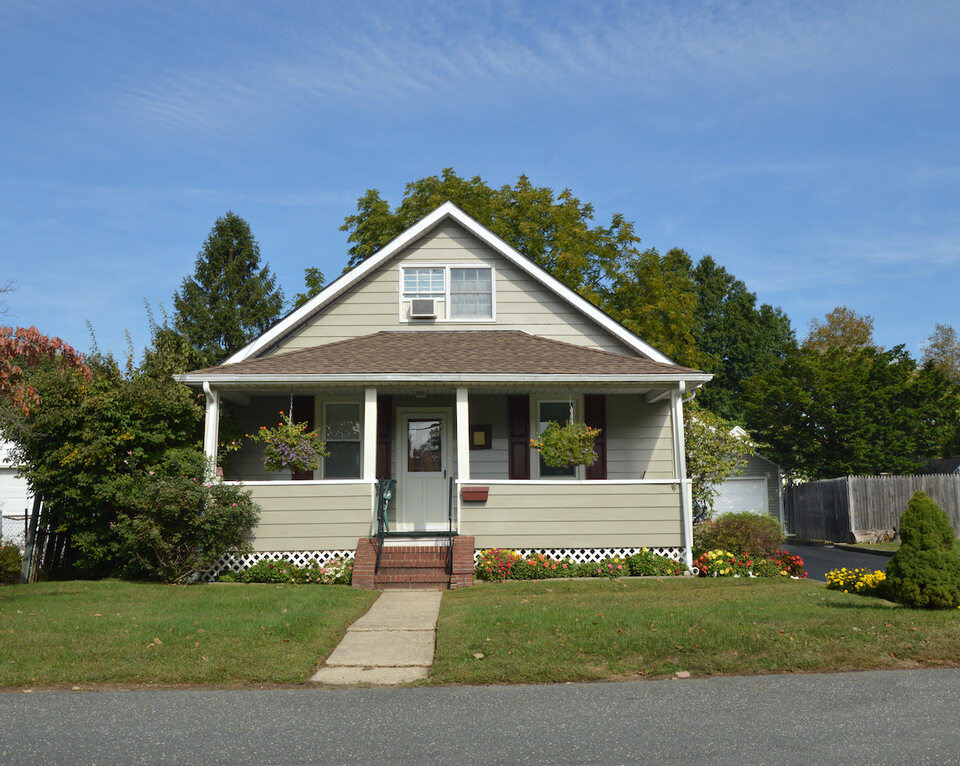At REInsurePro, we see numerous property claim submissions each day. And while some losses like hail damage are unavoidable, many are preventable. By taking proactive measures to protect their investment properties, your investor clients can significantly reduce the likelihood that they will experience a severe loss. Let’s explore the most common preventable property losses and what investors can do to avoid them.
Fire
Fire losses are not only one of the most common losses we see, but they are also the most damaging. The United States Fire Administration (USFA) and the Insurance Information Institute (III) report that the average house fire causes approximately $40,000 in damage. The claims we’ve seen support this average. It is also important to note that often, fires result in total loss. The average replacement cost for an investment property is typically around $80,000, but properties in certain parts of the country could range from $150,000 to one million.
It is rare that fires can be contained to the area of origin. In addition to the materials fires typically burn, the resulting smoke and soot can damage the investor client’s property and/or its contents. Smoke often leaves odors that are difficult to remediate without complete replacement of the damaged item(s).
Preventable Fires
- Cooking fires: Statistics from the National Fire Protection Association agree that cooking is the leading cause of home fires. Most often, cooking fires start from unattended cooking or from a grease fire that quickly gets out of control.
- Heating fires: Heating fires can result from someone using a space heater improperly or a person taking shelter in a vacant property and starting a fire to keep warm. Investors should consider including this Portable Heater Fire Safety flyer from the USFA in their tenant welcome packets.
How to Stay Fire-Free
Occupied Properties
- Test Smoke Alarms Monthly to be sure they are working.
- Keep fire extinguishers in the home and make sure tenants know how to properly use them.
- Install fire suppression products like StoveTop FireStop to help extinguish cooking fires and prevent larger fires from occurring.
Vacant Properties
- Layer security to ensure uninvited guests can’t enter the home.
- Make the property look as lived in as possible until it is sold or occupied; abandoned homes invite mischief and theft.
- Recruit neighbors to be on the lookout for any unfamiliar faces in the neighborhood and call the police if necessary.
Read Taming the Flame: 5 Ways to Avoid a Fire Loss
Water
Water losses, most often caused by burst pipes during winter freezes, are also one of the most common preventable losses we see. If the leak is discovered quickly, damage can be minimized, but if the water runs for several days before discovery, these losses can be just as severe and costly as a fire loss. Data we’ve collected over five years shows that the average water loss for an investment property ranges from $6,000 to $16,000 in damages. The clean-up is messy, and it can take a significant amount of time to restore a property back to an inhabitable or sellable condition.
Preventable Water Losses
Without question, the most common type of water loss we see are those resulting from a burst pipe. These losses tend to occur during extreme cold snaps, but especially when an owner, property manager, or tenant fails to take preventive measures to protect this type of loss from occurring. Many losses we see at vacant properties occur when the heat is set too low, turned off, or is disrupted when the electricity goes out during a storm. Water losses are also common when the occupant has left the residence for an extended period of time and an extreme weather event happens while they are away. In recent years, Arctic vertices have pushed freezing temps further south, damaging properties simply not equipped to handle that type of cold.
How to Prevent a Burst Pipe
Occupied Properties
- Insulate pipes on exterior walls, crawl spaces, and the attic.
- Open cabinet doors to allow heat to circulate to uninsulated pipes under sinks and appliances.
- Let warm water drip overnight, especially for faucets on outside walls.
Vacant Properties
- Set the thermostat no lower than 55 degrees Fahrenheit – it may need to be higher for properties in more northern locations or when colder temperatures hit.
- If the investor client does not live near the property, they should ask their property manager, a friend, or a neighbor to check the house daily during cold snaps to make sure it’s still warm.
- Shut off the water at the street and drain the plumbing system (i.e., winterize it).
- Read Protect Vacant Properties from Water Damage This Winter to learn more.
Theft
Properties under renovation or properties on the market for sale tend to be a thief’s favorite target. Both have relatively low traffic and contain valuables like new appliances, HVAC systems, construction materials, and tools. The average theft loss for an investment property is four times the national average per break-in. Statistically, the average break-in at an investment property totals around $8,000 while the average break-in on an owner-occupied property generally totals around $2,000.
How to Prevent Theft
Because some of the areas popular for investing can also experience higher crime rates (Detroit, for example), investors may feel as though theft or vandalism is just part of life. However, that is simply not true! There are steps your investor clients can take to make their property less appealing to thieves and vandals:
- Make the house look lived in – don’t be the easiest target on the block.
- Keep the yard clean and grass trimmed. Maintain trees and shrubs that may block views of the house and provide thieves with places to hide.
- A well-lit exterior may discourage thieves from approaching the house at night – just be sure they are placed high enough where it’s not easy to disable them.
- Make sure the property is properly secured – lock doors and windows and reinforce them with sturdy hardware.
- Consider reinforcing exterior doors with Door Armor to keep the bad guys out.
- Enlist neighbors to be a second (or third or fourth!) set of eyes and ears on the property.
- Ask neighbors to call the police if they notice any unfamiliar or suspicious faces in the neighborhood.
- When appropriate and required, board up the property with plywood, a cage system, steel, or plexiglass shields.
- Use an alarm system with monitoring – if someone does break in, they may turn around and leave just as quickly.
- Read 8 Great Ways to Protect Vacant & Renovation Properties to learn more.
Tenant Damage
Many of the claims we see involve tenant-caused damage, whether an unintended or malicious destruction of property. Placing the best tenant possible is one of the best ways to reduce unnecessary losses at an investment property.
Preventable Tenant Damage
The most common types of tenant-caused losses we see are three-fold:
- Cooking Fires: According to the National Fire Protection Association, the long-standing leader for home structure fires and home fire injuries, as well as home fire deaths is cooking. Many of the reports we see indicate something cooking on the stovetop was forgotten about and the tenant was either distracted by other activities in another room or fell asleep. Some reports also detail tenants being unable to put out a grease fire which then becomes uncontrollable.
- Wear-and-Tear: A normal amount of wear-and-tear is to be expected from the ordinary course of living, so investors should be fully prepared for carpet cleaning or fresh paint between renters. The cost of small repairs is usually taken care of through the security deposit or simply as a cost of doing business. “Wear-and-Tear” is typically an industry-wide exclusion in property policies.
- Damage During an Eviction: Not only do we see the wear-and-tear type of damage with evictions, but when a tenant is “forced out” of their home, they may do extreme physical damage to the property. We’ve also seen items of value taken out of the house such as large appliances, fixtures, and even the water heater and furnace. Intentional damage done by tenants is often not covered in property policies.
Learn more about Tenant Damage here.
How to Place the Best Possible Tenants
Placing the best tenant will take some legwork on the investor’s part. Every contact with a potential renter can tell the investor client something about their character and how they may treat the property. Investors should always do their due diligence with background and credit checks, making sure to verify any information the applicant submits. Or, if the investor client has a property manager performing this task, the investor will want to ensure they have a detailed grasp of their tenant selection process.
Trees
Trees are beautiful additions to a property’s landscape that can improve its value and curb appeal. However, if your investor clients don’t take steps to maintain their trees, they can do some serious damage to investment properties. Losses from trees cost real estate investors tens of thousands of dollars each year, some of them reaching $30,000 to $70,000 – or beyond. It also goes without saying that large heavy objects falling on people can cause serious injuries.
Preventable Tree Damage
Tree damage isn’t necessarily reserved for one time of the year, but we do see an increase in losses related to trees during storms. Winter storms can cause branches to break under the weight of ice and snow while spring and summer storms can blow trees over if the ground becomes over-saturated. Live trees aren’t immune to being damaged in a storm, but if your investor client fails to prune dead branches or cut down a dying or dead tree, they increase the likelihood of a tree loss exponentially. Read Even Healthy Trees Need Maintenance to learn more about tree loss mitigation.
How to Keep a Tree from Crushing Investment Goals
- Investors should make sure they or their property manager are checking trees on the property on a regular basis.
- Keep an eye out for visual signs of damage such as: dead or falling branches, deep cracks or missing bark, damage to the trunk, mushrooms or other fungus growing on the tree, and leaning trees.
- Trees with these visuals should be looked at immediately by a licensed and insured professional.
Liability
Liability losses can include different types of property damage and injuries. Fortunately, your investor clients can reduce their risk of damaging someone else’s property or the negligence that precludes an injury to almost zero through mindful maintenance and a swift response to correct safety issues brought to them or their property manager.
Preventable Liability Losses
The most common type of liability loss we see reported are slip-and-fall accidents. Some of these reports follow a pattern of eviction and then the filing of lawsuits. However, many legitimate injuries have been reported and range from broken bones, to paralysis, and even death. Slip-and-falls are typically the result of steps in need of repair or absent handrails.
How to Avoid a Lawsuit
- Have a scheduled maintenance plan for every property, or if your investor client has hired a property manager, be sure they verify each inspection and document the details of the items inspected during their visit. Having photos of the inspected/safe property may help the investor’s case if they are sued.
- If any hazards are discovered during an inspection, the investor client should be sure they are fixed as soon as possible. Advise tenants of safety precautions until the repair is made (put up a sign, block off the unsafe area, etc.).
- Respond promptly to any tenant communications about unsafe conditions.
- Your investor clients may use the Seasonal Maintenance Checklists in our Seasonal & Weather Tips section to help them stay on track in mitigating the most common risks of each season.
Won’t Insurance Cover These Losses?
The quick answer is…maybe. While insurance is an important part of your investor client’s risk mitigation plan, as you know, it typically doesn’t cover every type of loss, and each policy is different. Fire is typically covered in most standard policies. However, both Water and Theft are perils that are typically only covered under the Special Form policy format. Even if the investor client’s carrier does help cover the losses we’ve discussed, your investor client may prefer to avoid the following expenses or hardships by taking the proactive steps above to avoid:
- Stress
- Having to pay a deductible
- Having to pay additional interest to a lender
- Lost profits due to an extended renovation schedule
- An injury to a tenant, their family, or a guest at the property
- A lawsuit
- The loss of their investment





